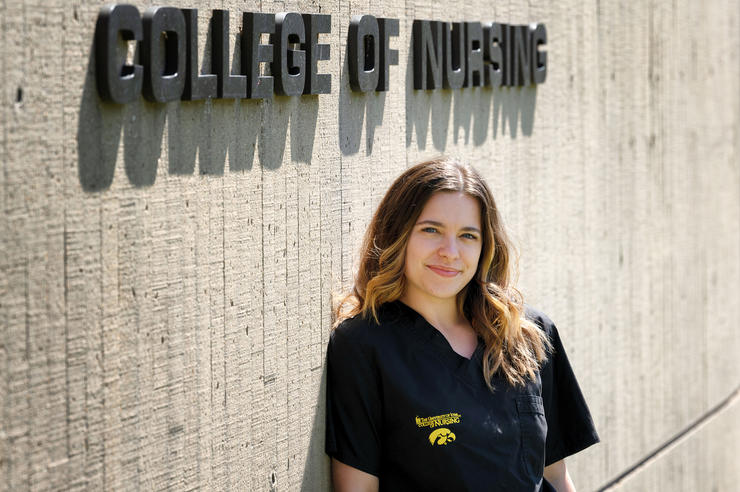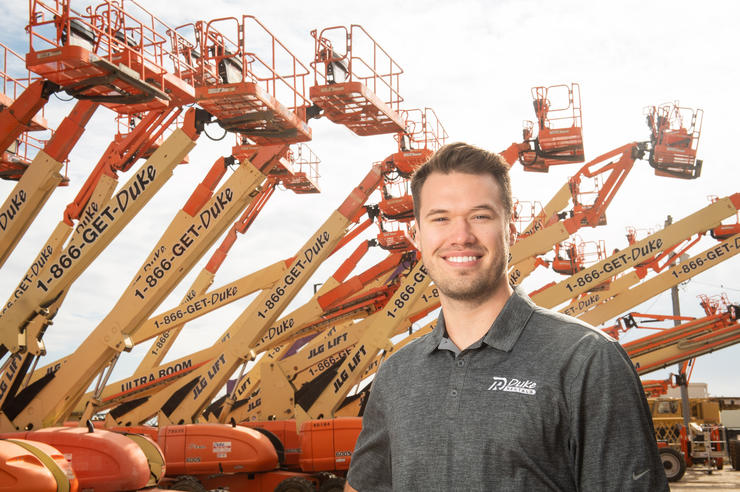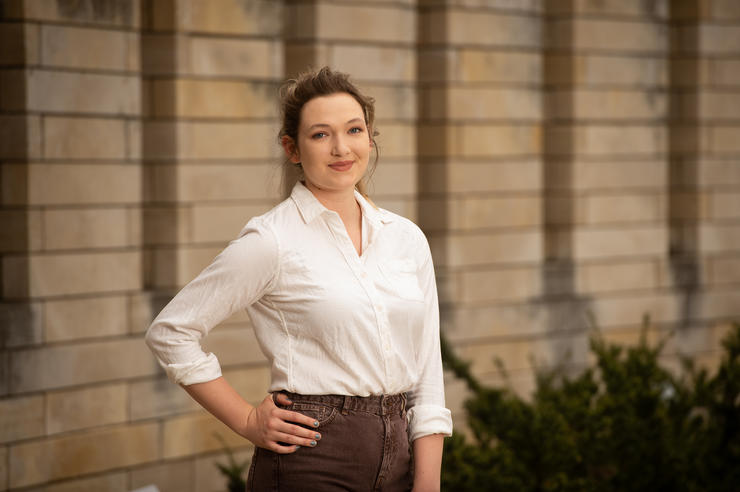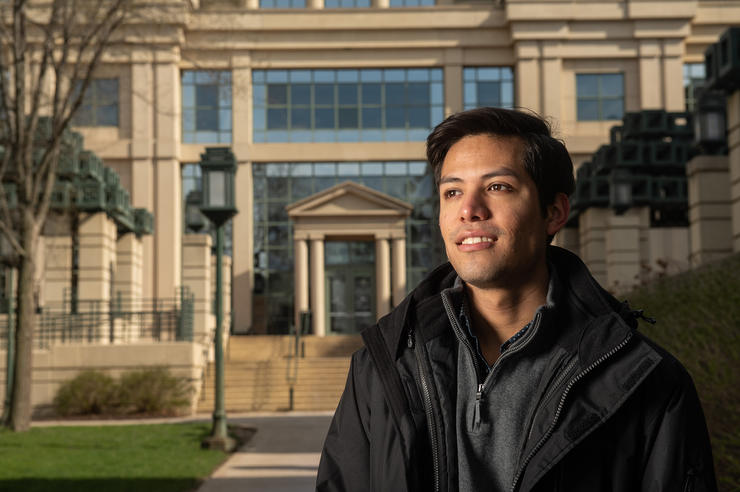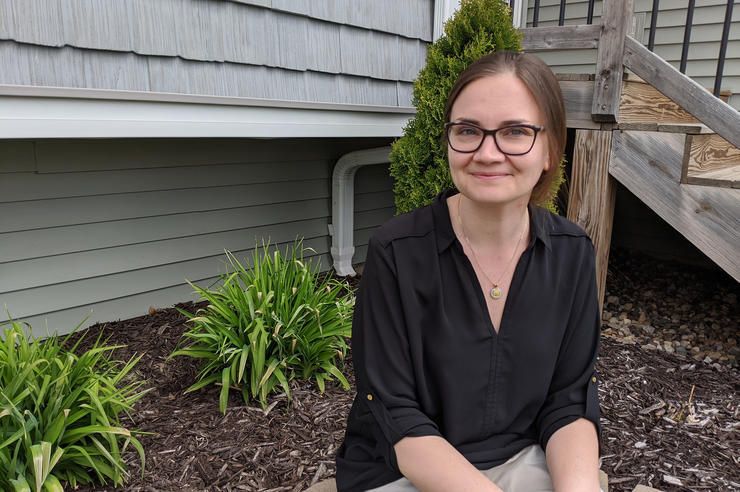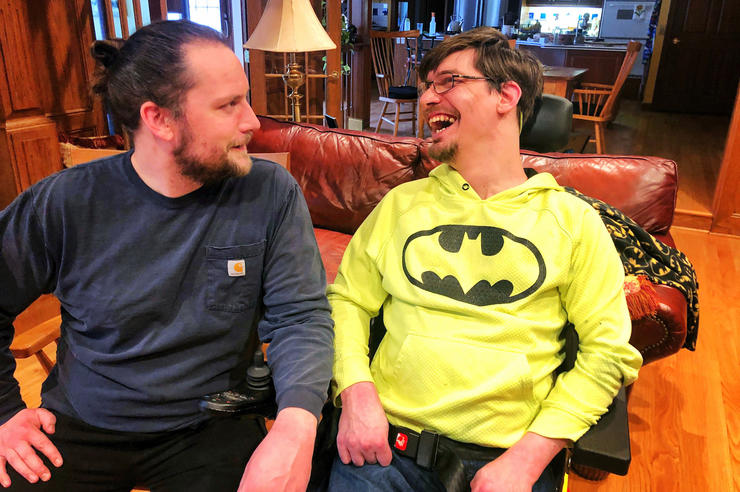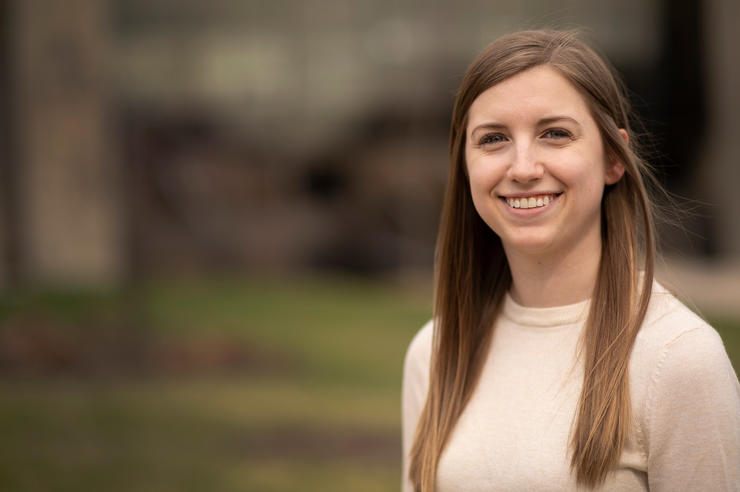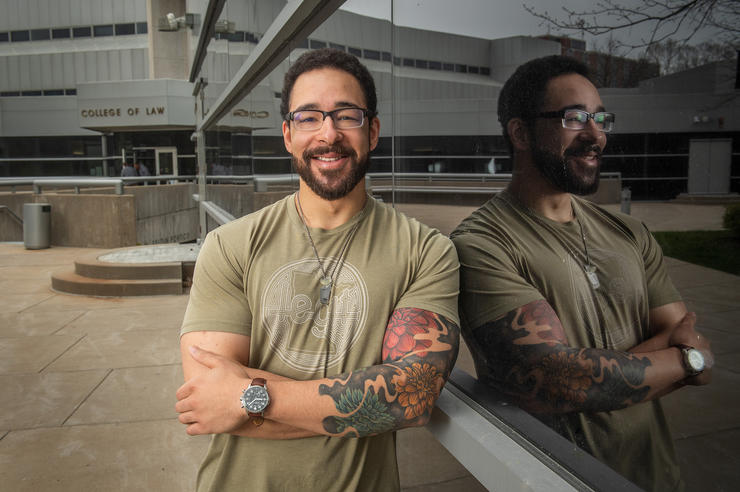Feeling right at home in his field
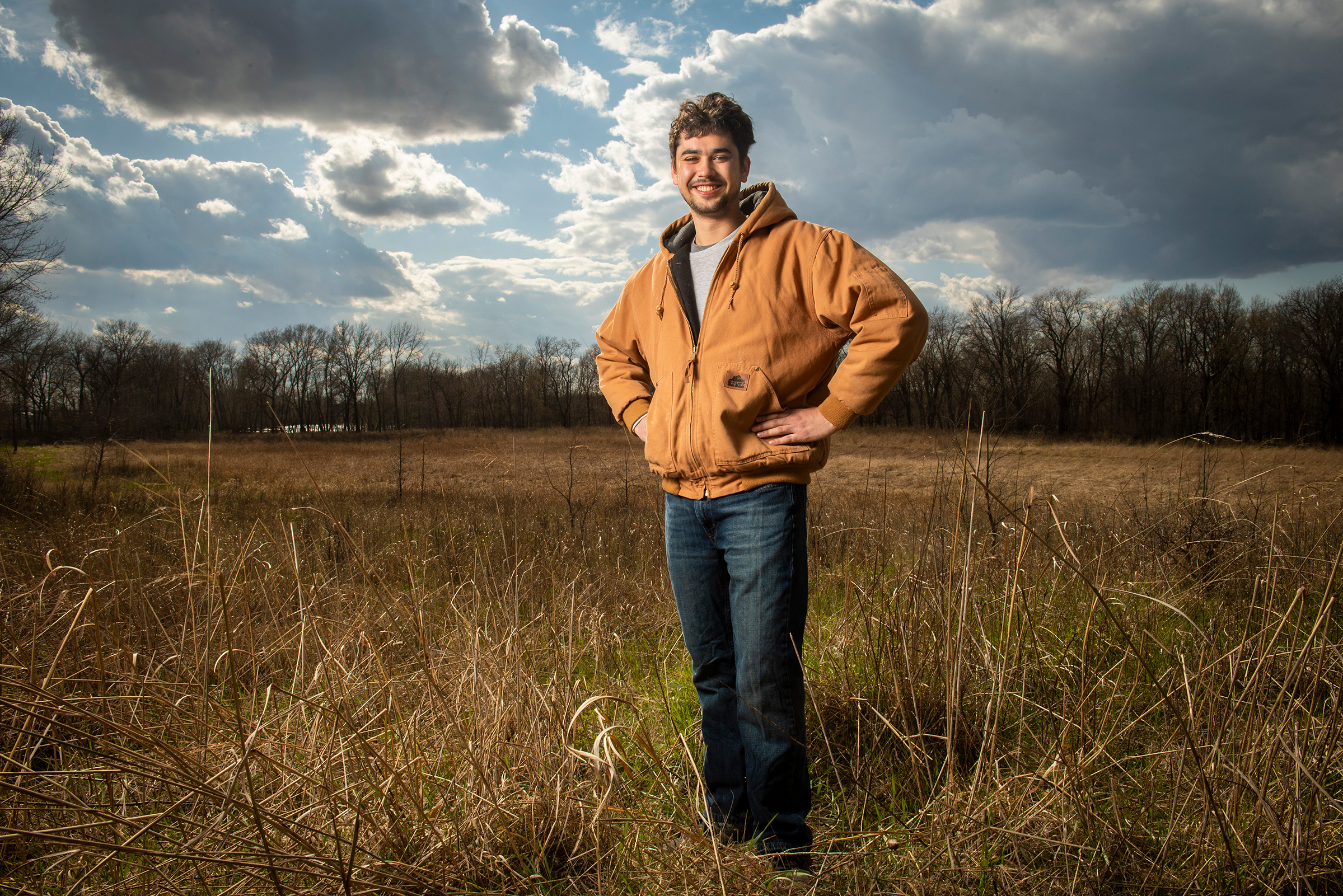
Degree: BA, informatics (with the geoinformatics cognate)
Hometown: Davenport, Iowa
Future plans: Look for employment within the commercial sector
When Brennan Slater was a boy, few things made him happier than going to the family’s 100-acre property along the banks of the Wapsipinicon River.
The land, in northern Scott County, had been inherited by his father, who intentionally made it wild. He created prairie, grasslands, and river bottom forest that attracted all sorts of wildlife.
Slater and his siblings loved it—fishing for catfish and carp, hopscotching among sand dunes in the river, careening about on ATVs. It was a place where a child could roam freely, immersed in nature.
“The property is a beautiful cross-section of primal Iowa. It’s like an oasis,” says Slater, who is from Davenport and visits there whenever he can.
Slater’s love of the outdoors inspired him to earn a degree from the University of Iowa in informatics with a geoinformatics emphasis, specializing in geography and geographic information system (GIS) technology. It also led to research in soils and water quality, and his interest in finding the right balance between human activities and the natural state.
“I think Iowa is in a really unique position between living with the land and using the landscape in a more efficient manner,” says Slater, who will graduate in May. “That’s why this research is so important. It’s finding ways to more efficiently use land, in a way that benefits the natural flora and fauna while at the same time being able to produce enough food and export to sustain the economy.”
In 2017, Slater enrolled in two programs at two schools: geoinformatics at Iowa and agricultural geospatial technologies at Kirkwood Community College. The Kirkwood program required Slater to find an internship in his field of study, and that is how Slater found himself visiting exposed river and stream banks across Iowa in summer 2018, working for the Iowa Geological Survey (IGS), which is part of IIHR—Hydroscience & Engineering, a research institute within the UI College of Engineering.
“I drove 3,000 miles in two weeks,” Slater says, “gathering soil samples from the Cedar River to the tiniest trickle of water in backcountry Iowa. I got to see every side of Iowa and the huge diversity of landscapes the state has. It was an awesome experience.”
He later measured nitrogen and carbon concentrations in the collected samples at the IGS Sediment Laboratory so researchers could better understand how streambank erosion is affecting Iowa’s water quality.
That same summer, Slater began working on another research endeavor: A project involving the Iowa Geological Survey, Kirkwood, and Coe College to measure the effects of applied nitrogen on groundwater. Slater and other researchers installed wells and buried PVC pipe in a farm field on the Kirkwood campus and then measured the amount of nitrogen concentration that passed from the soil into the groundwater.
“Come May, Brennan will be tremendously employable, because he has experience in the field collecting data. When I look at students, they can talk soils, but they can’t walk soils. Brennan can talk and walk soils.”
“It’s about how to keep more nutrients in the farm fields,” Slater explains. “Are there different ways to apply nitrogen in farm fields where it’s more retained in the soil and thus less in the waterways?”
Another project Slater is involved in is determining how well vegetation lining waterways can catch nutrients coming off farmland. At a private farm plot in Walcott, Slater has been gathering water samples and analyzing the nitrate levels in a lab.
On all these projects, Slater has worked closely with Matthew Streeter, a soil scientist at the IGS. Streeter says Slater’s skills and knowledge have opened a clear career path.
“Come May, Brennan will be tremendously employable, because he has experience in the field collecting data,” Streeter says. “When I look at students, they can talk soils, but they can’t walk soils. Brennan can talk and walk soils.”
Slater says his work on soils ties in pretty well with his natural sciences bias, adding: “I also really like the mix of lab time and field time, and I enjoy being able to see the process through from start to finish. It’s really fascinating to go out, gather a soil sample, dry it out, take it back to the lab, test it, analyze it, and send it to Matt to incorporate into his research. I get to see the scientific method in action, really.”
A lot will change for Slater when he graduates. The 25-year-old will marry his high-school sweetheart, who is an elementary-school teacher in the Iowa City school district, and look for a job, likely in the commercial sector, where he can use his GIS and mapping skills.
“My real passion is the mapping and the spatial side of it,” Slater says. “Soils is just a really good application of that.”

